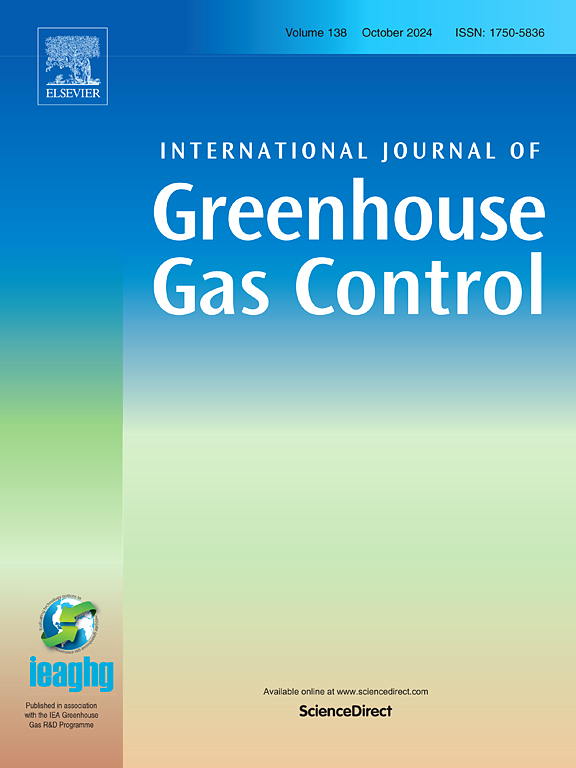Techno-economic-environmental study of CO2 and aqueous formate solution injection for geologic carbon storage and enhanced oil recovery
IF 4.6
3区 工程技术
Q2 ENERGY & FUELS
International Journal of Greenhouse Gas Control
Pub Date : 2024-10-01
DOI:10.1016/j.ijggc.2024.104257
引用次数: 0
Abstract
As carbon capture, utilization, and storage (CCUS), carbon-dioxide enhanced oil recovery (CO2 EOR) has inherent shortcomings, such as inefficient oil recovery and carbon storage, and low storage security with mobile CO2. This paper presents a techno-economic-environmental analysis of using formate species, a product of CO2 electrochemical reduction, as an alternative carbon carrier for sequestration and EOR in a carbonate oil reservoir in the Gulf of Mexico Basin. CO2 injection, water-alternating-CO2 injection, and aqueous formate solution injection were compared using a compositional reservoir simulation model and an economic calculator. Formate solution injection yielded greater levels of oil recovery and net carbon storage, where the carbon-bearing species resided in the dense aqueous phase without having to rely on petrophysical trapping mechanisms (structural and capillary). The enhanced oil production, net carbon storage, and storage security can be promoted by providing formate-based CCUS with more incentives (e.g., greater tax credit) in comparison to CO2-based CCUS for EOR and the manufacture of chemicals and products. In establishing carbon storage incentive policies and regulations, policymakers should include alternative carbon carriers.
注入二氧化碳和甲酸盐水溶液用于地质碳封存和提高石油采收率的技术经济环境研究
作为碳捕集、利用和封存(CCUS)的一种,二氧化碳提高石油采收率(CO2 EOR)具有固有的缺陷,如石油采收和碳封存效率低、流动二氧化碳的封存安全性低等。本文对使用二氧化碳电化学还原产物甲酸盐作为墨西哥湾盆地碳酸盐岩油藏封存和 EOR 的替代碳载体进行了技术-经济-环境分析。使用成分储层模拟模型和经济计算器对二氧化碳注入、水替代二氧化碳注入和甲酸盐水溶液注入进行了比较。甲酸盐溶液注入提高了石油采收率和净碳储量,其中含碳物质停留在高密度水相中,无需依赖岩石物理捕集机制(结构和毛细管)。与用于 EOR 和化学品及产品制造的基于 CO2 的 CCUS 相比,通过为基于格式的 CCUS 提供更多激励措施(如更大的税收减免),可以提高石油产量、净碳封存和封存安全性。在制定碳封存激励政策和法规时,政策制定者应将替代碳载体纳入其中。
本文章由计算机程序翻译,如有差异,请以英文原文为准。
求助全文
约1分钟内获得全文
求助全文
来源期刊
CiteScore
9.20
自引率
10.30%
发文量
199
审稿时长
4.8 months
期刊介绍:
The International Journal of Greenhouse Gas Control is a peer reviewed journal focusing on scientific and engineering developments in greenhouse gas control through capture and storage at large stationary emitters in the power sector and in other major resource, manufacturing and production industries. The Journal covers all greenhouse gas emissions within the power and industrial sectors, and comprises both technical and non-technical related literature in one volume. Original research, review and comments papers are included.

 求助内容:
求助内容: 应助结果提醒方式:
应助结果提醒方式:


